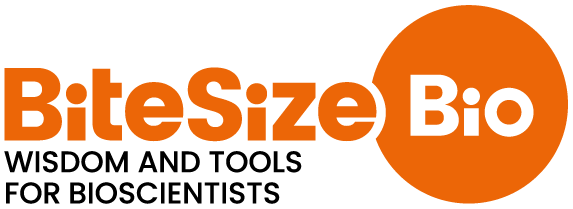How SDS-PAGE Works
#8 — You probably have or will use SDS-PAGE at some point to separate proteins, but do you really understand how this technique works? Knowing how SDS-PAGE works means you can tweak and troubleshoot your technique as well as impress your supervisor and lab mates.
In this episode, we take you through how SDS-PAGE works, including what SDS does, why you need to use a reducing agent like DTT or beta-mercaptoethanol, and the critical importance of the stacking gel.
Read the full How SDS-PAGE Works article [1] to see helpful visuals for how this technique works and access the table showing the protein sizes that different acrylamide percentages can separate.
Expand your knowledge by buffing up on laemmli buffer [2] and get our Guide to Gradient Gels. [3] If you pour your own SDS-PAGE gels, take a deep dive into the chemistry of how gels work and learn how to pour perfect gels every time with our Simple SDS-PAGE Gel Recipe with 10-Step Casting Protocol. [4]
Resources:
1 - https://bitesizebio.com/580/how-sds-page-works/
2 - https://bitesizebio.com/44540/laemmli-buffer-what-is-it-for-anyway/
3 - https://bitesizebio.com/47184/gradient-gels/
4 - https://bitesizebio.com/59429/sds-page-gel-recipe/
In this episode, we take you through how SDS-PAGE works, including what SDS does, why you need to use a reducing agent like DTT or beta-mercaptoethanol, and the critical importance of the stacking gel.
Read the full How SDS-PAGE Works article [1] to see helpful visuals for how this technique works and access the table showing the protein sizes that different acrylamide percentages can separate.
Expand your knowledge by buffing up on laemmli buffer [2] and get our Guide to Gradient Gels. [3] If you pour your own SDS-PAGE gels, take a deep dive into the chemistry of how gels work and learn how to pour perfect gels every time with our Simple SDS-PAGE Gel Recipe with 10-Step Casting Protocol. [4]
Resources:
1 - https://bitesizebio.com/580/how-sds-page-works/
2 - https://bitesizebio.com/44540/laemmli-buffer-what-is-it-for-anyway/
3 - https://bitesizebio.com/47184/gradient-gels/
4 - https://bitesizebio.com/59429/sds-page-gel-recipe/
Creators and Guests



